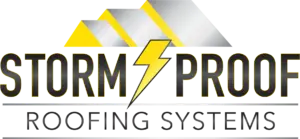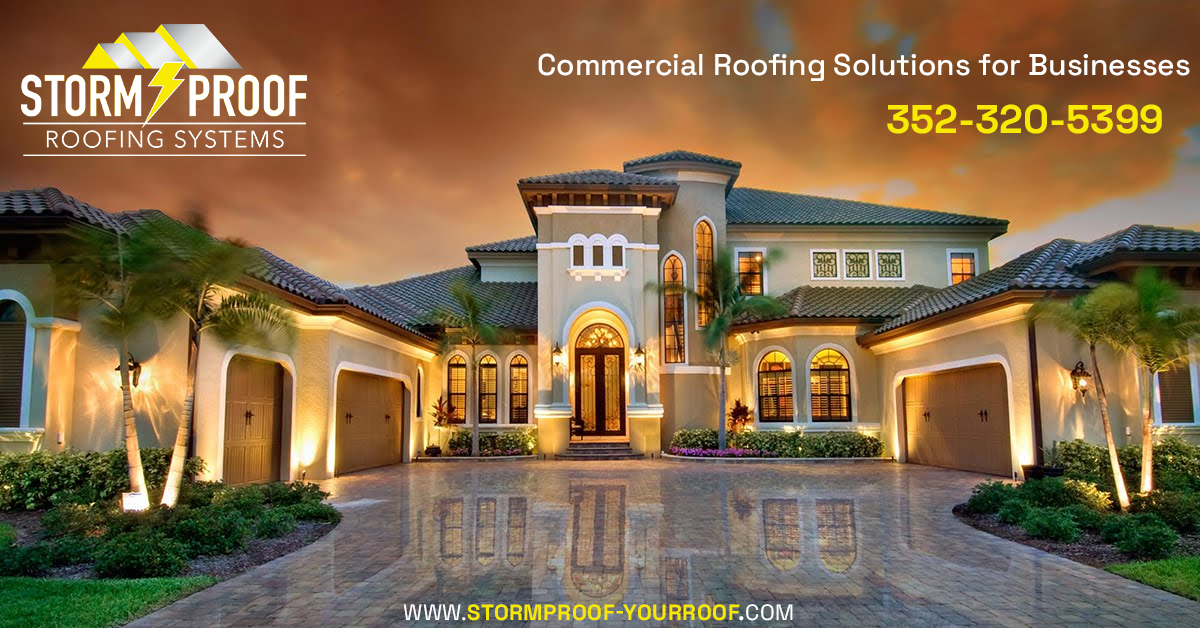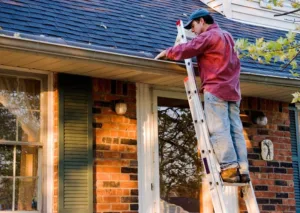Shielding Your Business: The Ultimate Guide to Storm-Proof Commercial Roofing Solutions
Introduction
The roof is one of the most important parts of any building, and commercial buildings are no exception. A sturdy and reliable roof is essential to protect businesses from the elements, ensure the safety of employees and customers, and maintain the integrity of the building’s structure.
The importance of a good quality commercial roofing solution cannot be overstated. One crucial aspect to consider when choosing a commercial roofing solution is its ability to withstand harsh weather conditions.
Storms can cause significant damage to traditional roofs, leading to leaks, structural damage, and costly repairs. This is where storm proof roofing systems come in.
Importance of Commercial Roofing Solutions for Businesses
A reliable commercial roofing system provides businesses with peace of mind by ensuring that their property is safe from natural elements such as rain, snowfall or hailstones. If a business doesn’t have adequate protection against these factors, they run a significant risk of damaging their premises’ inventory or equipment stored there.
Commercial roofing solutions can also help maintain optimal temperatures inside the building, regardless of outside weather conditions. This ensures that employees are comfortable while working and reduces energy costs associated with heating or cooling a large space.
Furthermore, investing in preventative maintenance on your commercial roof saves money on repairs in the long run. Regularly scheduled inspections allow professional roofers to detect minor issues before they become major problems that could lead to total replacement or more expensive repairs.
Overview of Storm Proof Roofing Systems
Storm proof roofing systems are designed specifically to withstand extreme weather conditions such as windstorms or heavy rainfall. These types of roofs incorporate materials such as impact-resistant shingles or waterproof membranes that offer superior protection against water damage caused by severe storms. Impact-resistant shingles are made from durable materials like asphalt or metal; they can withstand high winds and hailstones without cracking under pressure – providing maximum protection against inclement weather events.
Waterproof membranes are typically added to flat roofing systems and act as a barrier between the building’s interior and the elements outside. This prevents water from seeping through the roof and causing damage to insulation, walls, or ceilings.
Commercial roofing solutions can help businesses save money on repairs and energy costs while keeping their property safe from natural elements such as rain, snowfall or hailstones. Storm proof roofing systems offer an additional layer of protection against extreme weather conditions that could lead to costly damages.
Types of Commercial Roofing Solutions
Business owners have a variety of options when it comes to selecting a roofing system for their commercial property. The choice depends on several factors such as the climate, budget, building structure, and maintenance requirements. In this article, we will discuss three popular types of commercial roofing solutions: single-ply roofing systems, built-up roofing systems and metal roofing systems.
Single-Ply Roofing Systems
Single-ply roofing systems are lightweight and affordable options for businesses that do not want to spend too much on their roofs. They are made up of a single layer of synthetic polymer or thermoplastic material that is easy to install and maintain. Some common materials used for single-ply roofs include PVC (Polyvinyl Chloride), TPO (Thermoplastic Olefin) and EPDM (Ethylene Propylene Diene Monomer).
One significant benefit of single-ply roofing systems is that they offer excellent insulation capabilities which can lead to significant energy savings in heating and cooling costs over time. Also, they are highly resistant to UV radiation which means they can withstand prolonged exposure to sunlight without degrading or losing their protective properties.
The installation process of a single-ply roof typically involves attaching the material directly onto the roof deck using adhesives or mechanical fasteners. Because these roofs only consist of one layer, maintenance requirements tend to be relatively minimal.
Built-Up Roofing Systems
Built-up roofs (BUR) consist of multiple layers of bitumen and reinforcing fabrics such as fiberglass or polyester matting. These layers are fused together using hot asphalt or coal tar pitch until they form a watertight membrane that protects the building from outside elements. One benefit of BURs is their high durability as they can last up to 30 years with proper maintenance.
Additionally, BURs provide excellent insulation against heat and cold, which can lead to energy savings in heating and cooling costs. Installation of BURs involves applying alternating layers of bitumen and reinforcing fabrics on the roof deck.
The process requires specialized equipment and skilled labor, making it more expensive than single-ply roofing systems. Maintenance requirements for a BUR include regular inspections to check for cracks or punctures in the surface layer.
Metal Roofing Systems
Metal roofing systems are made from a variety of metals including galvanized steel, aluminum, copper, or zinc. They are durable, long-lasting options that can withstand harsh weather conditions such as hailstorms or hurricanes.
Additionally, metal roofs are eco-friendly as they can be recycled at the end of their lifespan. Metal roofs come in different shapes and sizes such as standing seam roofs or corrugated metal panels.
This variety allows business owners to choose a roof that complements their building’s design aesthetic. Installation of a metal roof depends on the material used but typically involves fastening the panels onto the roof with screws or clips.
Maintenance requirements for metal roofs include regular cleaning to remove debris buildup that could potentially lead to rusting over time. Choosing the correct type of commercial roofing system is crucial for business owners who want to protect their investment in their property.
Single-ply roofing systems tend to be more affordable with lower maintenance costs while built-up roofing systems offer durability against harsh weather conditions and longevity with proper maintenance. Metal roofs provide an eco-friendly option with various design choices available while providing durability against harsh weather elements.
Storm Proof Roofing Systems
As the effects of climate change continue to be felt around the world, storms are becoming more frequent and severe. For businesses, this means that their structures need to be prepared for the worst. Storm proof roofing systems offer an ideal solution for businesses who want to protect their assets from damage caused by hurricanes, tornadoes, and other extreme weather events.
Definition of storm proof roofing systems
Storm proof roofing systems are designed to withstand extreme weather conditions. They are made of durable materials that can withstand high winds, heavy rainfall, hailstones and flying debris. These systems incorporate design features such as sealed edges and special adhesives that prevent water from seeping through the roof structure during heavy rain or snowfall.
Additionally, storm-proof roofing systems employ techniques such as interlocking panels or tiles which provide a strong bond between each piece and help reduce wind uplift forces during high winds. A properly installed storm proof roof is one that can sustain wind speeds of up to 150 miles per hour without showing signs of damage.
Benefits of storm proof roofing systems for businesses
The benefits of installing a storm-proof roof in your business premises cannot be overstated. Perhaps the most obvious benefit is increased safety for employees and customers during extreme weather events. With a properly installed storm-proof roof system in place, you can rest easy knowing that your roof will not collapse or suffer serious damage during a major hurricane or tornado.
In addition to enhanced safety measures, businesses with storm-proof roofs also benefit from reduced repair costs associated with weather-related damages. The durability and strength provided by these specialized roofing solutions translate into long-term savings on maintenance expenses since they do not require frequent repairs or replacements.
Types of storm proof roofing systems
Impact-resistant shingles: These are asphalt shingles which have been reinforced with fiberglass mats or polymer-modified asphalt. They are designed to resist damage from hailstones and flying debris.
Wind-resistant tiles: These are clay or concrete tiles that interlock with each other to provide a strong bond. The interlocking feature reduces the chance of shingles or tiles being blown away during high winds.
Waterproof membranes: These are specialized roofing materials made of synthetic rubber, PVC or modified bitumen. They provide an impenetrable barrier against water and moisture, which helps prevent leaks during heavy rain and snowfall.
Storm proof roofing systems offer a reliable and safe way to protect businesses from the damaging effects of extreme weather events. Businesses that invest in these specialized roofing solutions can enjoy long-term savings on repair and maintenance costs while providing enhanced safety measures for employees and customers alike.
Implementation Process for Storm Proof Roofing Systems in Businesses
Roof Inspection by Professionals to identify the weak points in the roof
Before installing a storm proof roofing system, it is essential to inspect the current roof structure. A professional roofing contractor can assess the roof’s condition and identify any potential weak points. This inspection helps to determine whether any repairs are necessary before installing a new storm proof roofing system.
During the inspection, a professional contractor will check for any signs of damage or wear and tear that could affect the integrity of the new storm proof roofing system. The inspection will include checking for cracks, leaks, rotting wood, and other issues that could lead to water damage or structural problems.
The results of this inspection will guide contractors in determining the appropriate course of action and materials needed for installation. If there are significant issues with the current roof structure, these may need to be addressed before installing a new storm proof roofing system.
Selection of appropriate materials based on the type of roof
Selecting appropriate materials is crucial when it comes to installing a storm proof roofing system. Different types of roofs require different materials depending on their design and construction.
For example, flat roofs require different materials than sloped roofs due to their unique design features. A professional contractor can help businesses choose suitable materials based on their specific needs and budget.
Materials such as impact-resistant shingles, wind-resistant tiles or waterproof membranes are commonly used in storm proof roofing systems. It is important that these materials meet local building codes as well as your business’ requirements for durability and longevity.
Installation process, including removal of old materials, installation of new ones, sealing etc.
The installation process for a storm proof roofing system typically involves removing old materials from the existing structure before installing new ones. This may include removing old shingles or tiles from sloped roofs, or removing layers of built-up roofing material from flat roofs. Once the old materials have been removed, the installation process can begin.
The process may vary depending on the type of roofing system being installed. In general, contractors will install a waterproof membrane followed by impact-resistant shingles or wind-resistant tiles.
The final step in the installation process involves sealing all seams and edges to prevent water infiltration. This helps to ensure that the new storm proof roofing system provides maximum protection against severe weather events.
Maintenance procedures to ensure longevity
To ensure longevity and optimal performance of a storm proof roofing system, it is essential to follow proper maintenance procedures. Maintenance requirements may vary depending on the type of materials used and local weather conditions. Regular inspections should be performed by a professional contractor to identify any potential issues before they become serious problems.
Any necessary repairs should be made promptly to avoid further damage and prolong the life of the roof. In addition, it is important to keep gutters clean and free of debris that could cause water buildup.
Regular cleaning will prevent water from seeping into cracks or crevices in the roof structure. By following these maintenance procedures, businesses can be confident that their storm proof roofing systems will provide long-lasting protection against severe weather events while also reducing overall maintenance costs over time.
Case Studies: Successful Implementation Of Storm Proof Roofing Systems In Businesses
Examples from different industries such as healthcare facilities
There are many examples of successful implementation of storm proof roofing systems in various industries. One notable example is from the healthcare industry, where a hospital in New Orleans turned to a storm proof roofing system after being severely damaged by Hurricane Katrina.
The hospital opted for an impact-resistant shingle system that had a Class 4 rating, the highest rating for hail resistance. After the installation of the new roof, there were no leaks or damage caused by subsequent hurricanes that hit the area.
Another example is a school district in Texas that implemented a wind-resistant tile system to protect their buildings from tornadoes and high winds. The tiles were designed to withstand winds up to 130 mph and were able to provide long-term protection for school buildings.
A third example comes from a retail store chain that installed waterproof membranes on their roofs to prevent water leaks during heavy rainstorms. This solution not only prevented damage to merchandise but also provided safety and comfort for customers and employees during inclement weather.
Conclusion
Storm proof roofing systems have become more important than ever as natural disasters become more frequent and severe. Commercial businesses can benefit greatly from implementing these solutions, which can save them money on repairs and replacement costs in the long run while providing peace of mind during severe weather events.
It is essential for businesses to work closely with professionals who specialize in commercial roofing solutions when deciding on the best type of system to install based on their specific needs. With proper planning, installation, and maintenance, storm proof roofing systems can offer reliable protection against Mother Nature’s wrath.




